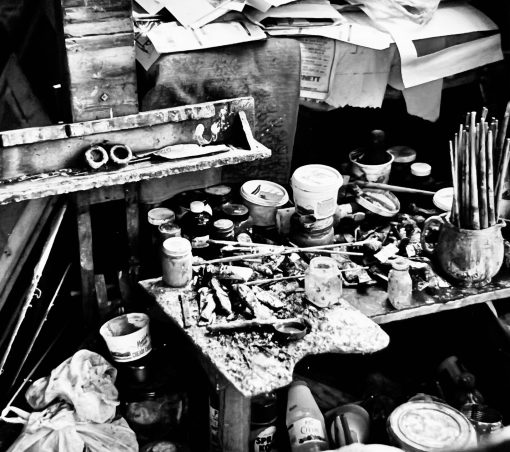
Peter Carson
Check back for 2023 Exhibition dates
Peter Carson was born in Christchurch in 1938 and grew up on a farm at Harewood. He was educated at Harewood School and Papanui High School. In 1953 he was apprenticed as a book-binder at the Canterbury Public Library where he was to work for 10 years.
At about the same time, he began drawing and painting with the encouragement of John Summers, at whose bookshop he met Toss Woollaston with whom he would later paint on the West Coast.
In 1959, he participated in group shows at Gallery 91. Charles Brasch purchased drawings from his first one man show at John Summers Bookshop in 1963. Having left his library job in an attempt to paint full time, in the mid-sixties he moved to Rangiora, where he worked as a postman from 1968 until 2012, painting in the afternoons after his round.
He died in an Oxford Rest Home in 2022 from complications following Covid.
Peter has exhibited at the Canterbury Society of Arts, and his paintings have been purchased by the following galleries:

For Carson the pathway to the universal is through the transcendent qualities of light.
“You can tell a lot about an artist by looking at their studio. These are two photographs taken on a trip back to New Zealand, a trip that was never complete without visiting Peter and being shown a new work in progress. Paintings and drawings would be pulled out slowly one after another for quiet and lengthy contemplation.
Although Peter is out of frame and obscured from us, his presence is strongly felt. It is there in the careful arrangement of books and prints on Peter’s shelf. Looking closely, one can see a Samuel Palmer print, a Toss Woollaston sketch, a work by William Blake, all part of the influences and inspirations for Peter’s own deeply felt interpretations of inner and outer landscapes – sublime, visionary and spiritual. Created in a small studio space in Cust, these windows into the soul have made their way into the world, into homes and galleries, and onto library walls. But now, as there can be no more, they remind us of our own special relationship with Peter, and his generous and humble contribution to the wider history of New Zealand art.”
Julian Holcroft

